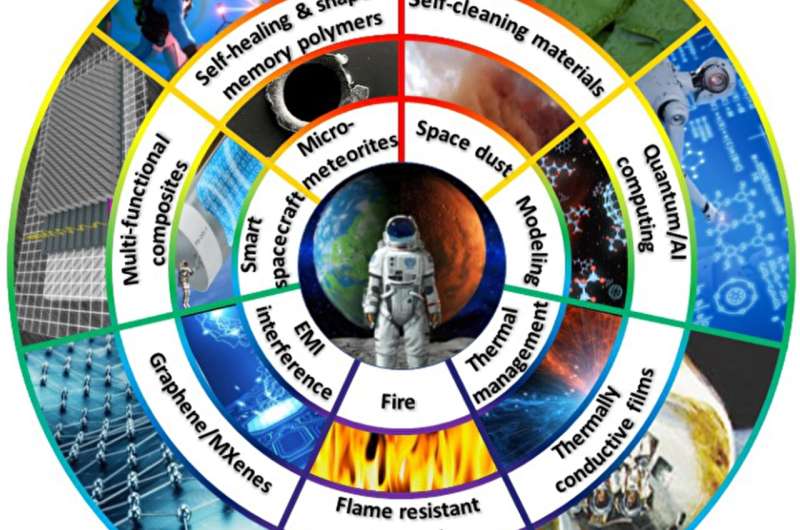Nisa Salim says space exploration has always been an exciting and expensive endeavor for humanity. "As we push the boundaries of space exploration, ensuring astronaut safety and the long-term operation of space technologies becomes paramount."
"This research serves as a catalog of innovative materials that hold the promise of transforming space exploration," says Salim.
Swinburne Pro Vice-Chancellor Flagship Initiatives, astronomer and article co-author Professor Alan Duffy says "the space environment is one of the most challenging that humanity has ever encountered, requiring multiple solutions to all be incorporated into a single mission."
"This work brings together an enormous breadth of next-generation technologies that companies and space agencies can adopt to meet the challenges at the final frontier. Swinburne's world-leading teams in astrophysics, materials and surface coating design, and advanced manufacturing offers a vision for a future space sector that can be realized from today's breakthrough research."
Intergalactic material power
"Each challenge demands a specialized solution to enable successful missions," says Dr. Salim.
Dr. Salim's research highlights the following findings about each innovative material:
- Multifunctional carbon fiber composites possess exceptional strength-to-weight ratios and can serve multiple purposes, reducing overall spacecraft weight and boosting mission efficiency.
- EMI shielding materials provide protection against electromagnetic interference that disrupts communication and navigation systems, ensuring smooth and reliable data transmission in the harsh environment of space.
- Advanced materials with superior thermal management properties can help regulate temperatures and protect sensitive instruments from damage caused by excessive heat or cold.
- Graphene-based wearables have the potential to revolutionize space exploration by providing lightweight, flexible, and high-performance solutions for astronaut health monitoring, radiation protection, thermal management, energy harvesting, communication, impact protection, and environmental monitoring.
More information: J. C. Ince et al, Overview of emerging hybrid and composite materials for space applications, Advanced Composites and Hybrid Materials (2023). DOI: 10.1007/s42114-023-00678-5
Provided by Swinburne University of Technology

